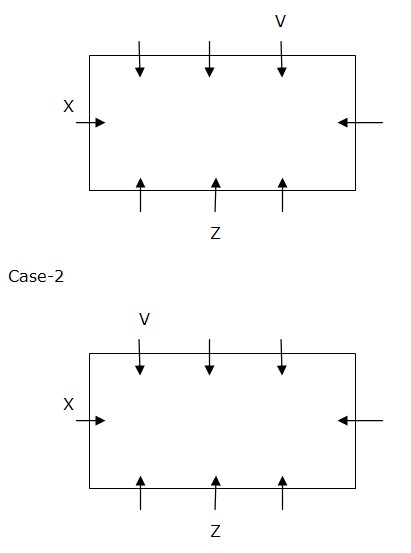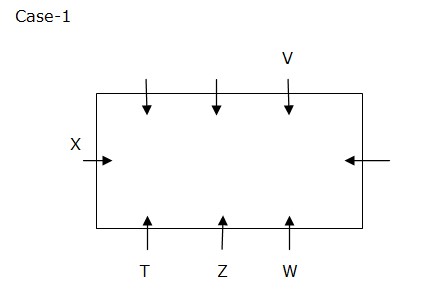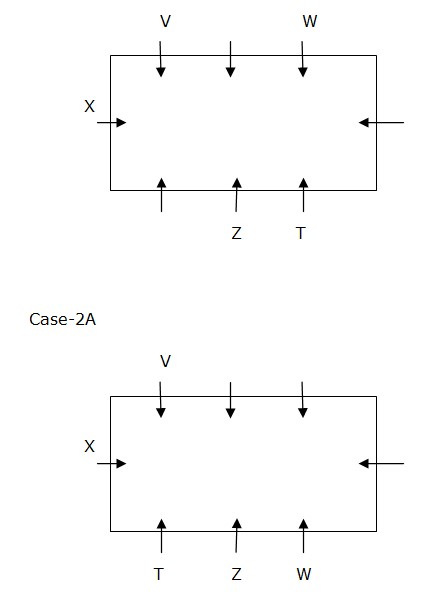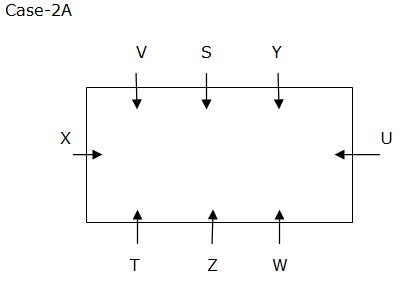Question
If all the persons are arranged in alphabetical order
from I in a clockwise direction, then how many persons remain unchanged in their position(Excluding I)? Study the following information carefully and answer the below questions. Eight persons- S, T, U, V, W, X, Y and Z are sitting on the rectangular table facing the centre but not necessarily in the same order. Three of them sit at each long side where one person sits at each smaller side. The consecutive alphabetically named persons are not sitting together. The number of persons sits between X and W is the same as the number of persons sit between W and S. Z sits second to the right of X who sits on the smaller side of the table. The number of persons sits between U and S is one more than the number of persons sit between V and X when counted from the right of both U and V. W sits second to the right of T. Only two persons sit between Z and V.Solution
We have, Z sits second to the right of X who sits on the smaller side of the table. Only two persons sit between Z and V. From the above condition, there are two possibilities. Case-1  Again we have, W sits second to the right of T. From the above condition, there are three possibilities.
Again we have, W sits second to the right of T. From the above condition, there are three possibilities.  Case-2
Case-2  Again we have, The number of persons sits between X and W is the same as the number of persons sit between W and S. The number of persons sits between U and S is one more than the number of persons sit between V and X when counted from the right of both U and V. From the above condition, case1 and case2 get eliminated. Case2a shows the final arrangement.
Again we have, The number of persons sits between X and W is the same as the number of persons sit between W and S. The number of persons sits between U and S is one more than the number of persons sit between V and X when counted from the right of both U and V. From the above condition, case1 and case2 get eliminated. Case2a shows the final arrangement. 
Six person, T, U, V, W, X and Y, are placed in a row facing towards the north (not necessarily in the same order). T sits to the immediate left of Y. X ...
How many people live on the floors above the one on which Ankita lives?
Who is second to the left of D?
Who is sitting third to the right of daughter of B?
Which of the following pair of persons are immediate neighbors?
How many persons sit between T and R, when counted from the left of T?
If ‘F’ is related to “Hindustan Times’ and ‘H’ is related to ‘Punjab Kesari’ in a certain way based on t...
Which of the following numbers will replace the question mark (?) in the given series?
5, 10, 30, 120, ?, 4320
Which of the following statements is/are true?
Who among the following is an immediate neighbor of Pallav and Padma?
Relevant for Exams:


